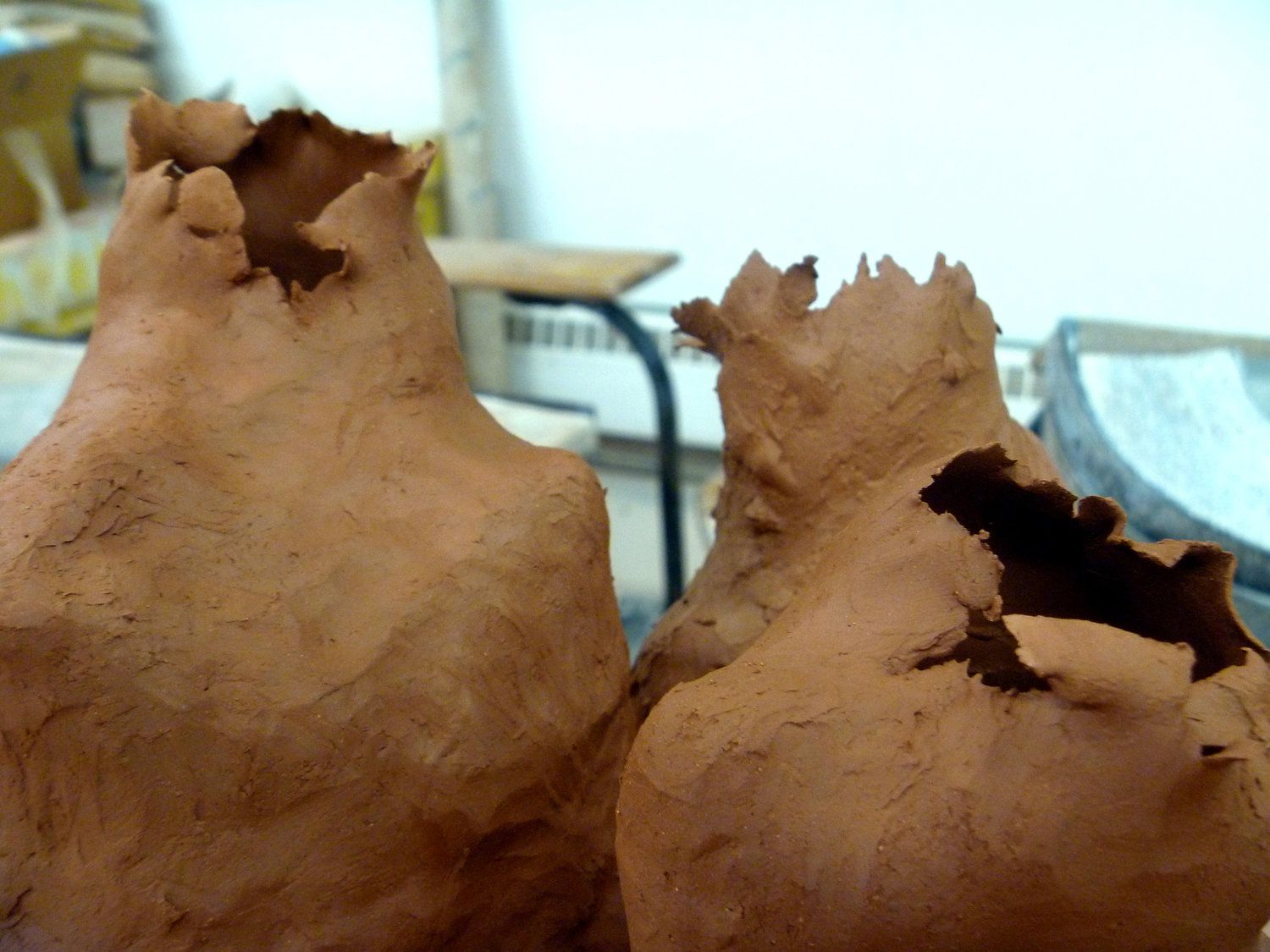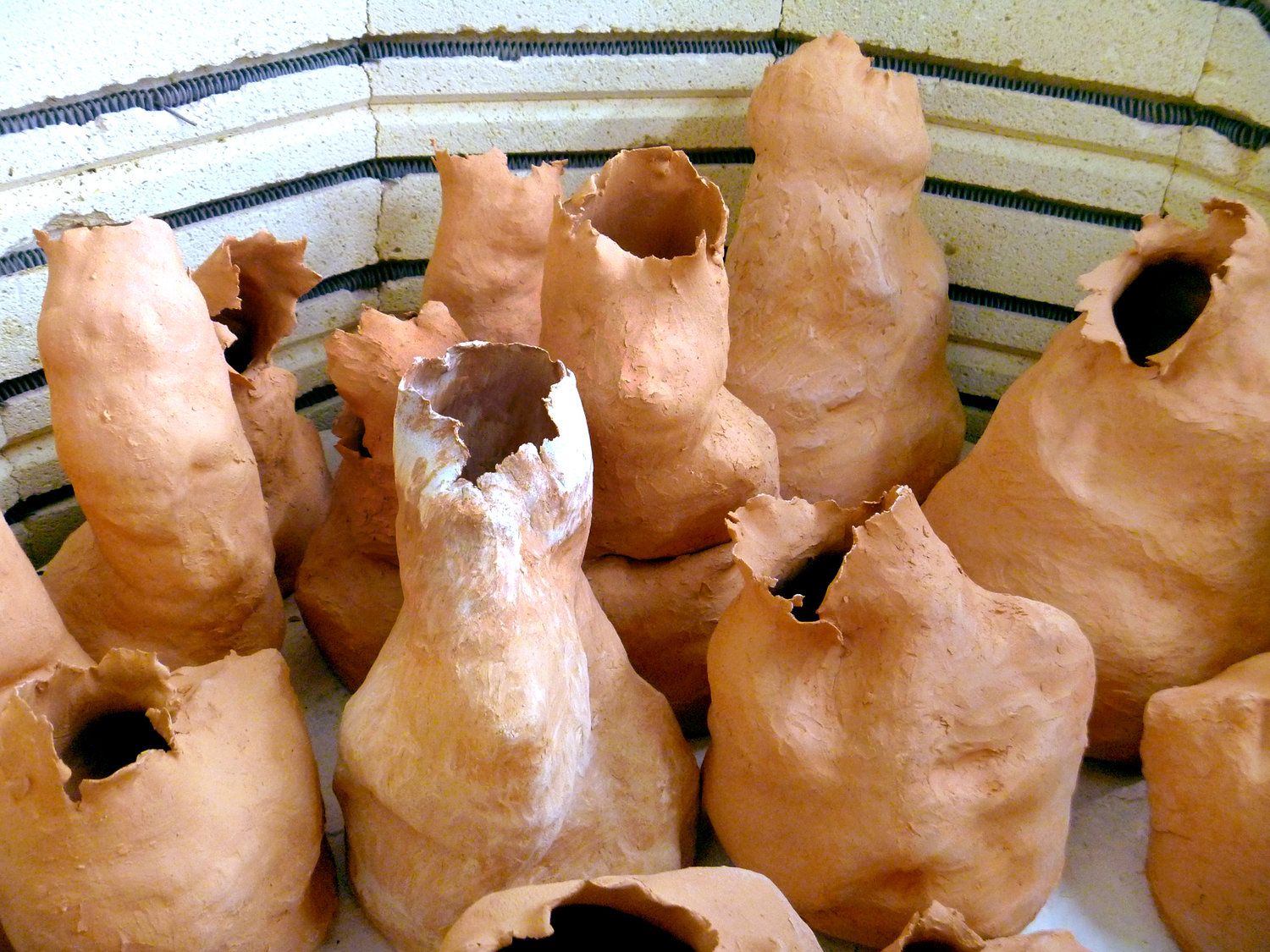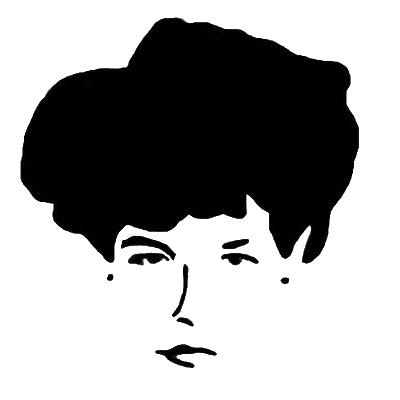


I’ve not been gentle with myself. I’ve not been gentle with the clay or my manuscripts. I manipulate the clay until it tears, I cinch it back together. I blow in the muddy mouths of the nests to fill them with air until they burst. I roll my fingertips along the inside of their silty bellies until they almost rip. And while I do these things, I think about language. I think about the body. How they—language and the body—perform together and apart. I think about how hungry and terrified I am for intimacies of all kinds. And yet, I have been gentle; I cup disparate sounds. I hold the insides in. Writing is the retrieval of material to produce a desired shape. A question that birds might consider: what is the distance between material and building site? What will be lost in transit? Birds and insects build structures in tension. Many solve the problem of ephemerality with secretions from their own bodies: silk, wax, feathers, and fecal cement. Reproduction and writing cannot be understood without nest consideration: its content, materiality, and spatial relationships. Nests and narratives are prenatal: a clutch for eggs and honey. What is archived in order for something else to be un-archived within the nest and body and poem?
